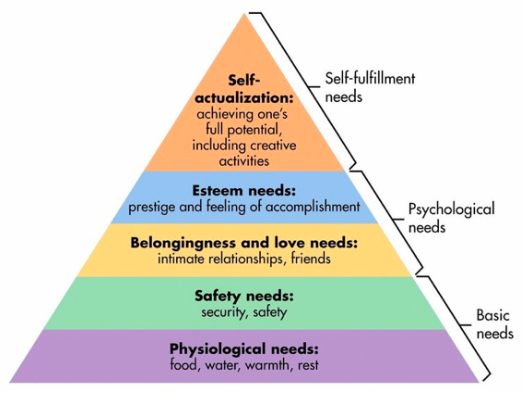Goal setting is an essential part of personal and professional development. It is the process of identifying what an individual wants to achieve and creating a plan to reach those objectives. Setting goals can help individuals stay focused, motivated, and on track towards success.
Read on to discover how to set goals and more importantly, achieve them.
Key Takeaways:
- Goal setting is the process of identifying what an individual wants to achieve and creating a plan to reach those objectives.
- Effective goals should be specific, measurable, attainable, relevant, and time-bound (SMART).
- Strategies for goal achievement include breaking down larger goals into smaller, achievable steps, tracking progress, and adjusting the plan as necessary to stay on track.
Understanding Goal Setting
Goal setting is a process of identifying what an individual wants to achieve and establishing measurable objectives and timeframes to achieve them. It provides a clear understanding of what needs to be accomplished and why it is important. Setting goals is a powerful tool for motivation and personal development. It helps individuals to focus on what they want to achieve and take the necessary steps to get there.
The Importance of Goal Setting
Setting goals is an important aspect of personal and professional growth. It provides a framework for planning and decision-making, which helps individuals to stay focused and motivated. Goals give direction and purpose to life, helping individuals to prioritize their time, resources, and energy towards achieving what is important to them.
Goal-Setting Theory
The goal-setting theory is a framework that explains how goal-setting affects performance. According to the theory, setting specific, attainable, measurable, relevant, and time-bound (SMART) goals leads to higher levels of performance. It is based on the idea that setting challenging goals motivates individuals to work harder and smarter to achieve them.
How To Pick The Right Goal
Goal setting shouldn’t be difficult, we usually make it that way because we try to focus on too many things or the wrong thing altogether. To isolate the right area of life we should work on use the three pillars approach.
Health
Health can be defined as physical, emotional, mental or spiritual and is the key pillar. When there is an imbalance in this pillar, the other pillars are also affected.
Wealth
Wealth is the least important but can drive better outcomes in the other two pillars. Our personal wealth, occupation and passions fall into this category.
Relationships
The second most important pillar includes our relationship with ourselves and others. Strong relationships will create safety which gives us the freedom to pursue our passions or goals in other areas.
Grade your pillars
Grade each pillar out of 10. If you find there is a pillar out of alignment from where you want it to be, deal with that area. If you seem to have balance, use the priority of the pillars to decide your starting point. Health first, relationships second and wealth last.
This also aligns with Maslow’s Hierarchy of Needs in importance as you will see below:

Setting Effective Goals
Setting goals is an essential part of achieving success in any area of life. However, not all goals are created equal. In this section, we will explore three key aspects of setting effective goals.
The SMART Framework
The SMART framework is a popular method for setting effective goals. SMART stands for Specific, Measurable, Attainable, Relevant, and Time-bound. Specific goals are clear and well-defined. Measurable goals have a quantifiable outcome. Attainable goals are realistic and achievable. Relevant goals are aligned with the individual’s values and vision. Time-bound goals have a deadline.
Using the SMART framework can help individuals set goals that are more likely to be achieved by creating a roadmap for success.
Creating Challenging Yet Achievable Goals
While it is important to set attainable goals, it is also important to create goals that are challenging enough to inspire growth and progress. When goals are too easy, individuals may become complacent and fail to reach their full potential. On the other hand, when goals are too difficult, individuals may become overwhelmed and give up.
To create challenging yet achievable goals, individuals should consider their current abilities and resources. It is also important to break down larger goals into smaller, more manageable goals. This can help individuals stay motivated and track progress.
Aligning Goals With Your Values and Vision
Finally, it is important to align goals with an individual’s values and vision. When goals are aligned with an individual’s core values, they are more likely to be meaningful and motivating. Similarly, when goals are aligned with an individual’s vision for their future, they can help create a sense of purpose and direction.
To align goals with values and vision, individuals should consider what is most important to them and what they hope to achieve in the long-term. This can help ensure that goals are not only effective but also personally fulfilling.
Strategies for Goal Achievement
Setting goals is just the first step in achieving them. Below are some of the most effective strategies for achieving your goals.
Planning and Roadmapping
One of the most important strategies for achieving goals is planning and roadmapping. This involves breaking down your larger goal into smaller, more manageable steps. By doing this, you can create a roadmap that will guide you towards your ultimate goal. This can help you stay focused and motivated, as you will be able to see progress towards your goal.
Monitoring Progress and Receiving Feedback
Another important strategy for achieving goals is monitoring progress and receiving feedback. By regularly tracking your progress, you can identify areas where you are making progress and areas where you may need to make adjustments. Additionally, receiving feedback from others can help you identify blind spots and areas where you may need to improve.
Overcoming Obstacles and Setbacks
Finally, overcoming obstacles and setbacks is an essential strategy for achieving goals. No matter how well you plan, there will always be obstacles and setbacks that arise along the way. By developing problem-solving skills and a growth mindset, you can learn to overcome these challenges and continue making progress towards your goals.
Related Posts:
- Changing habits | 12 tips to breakthrough to habit mastery
- Atomic Habits Review: A Comprehensive Look At James Clear’s Bestselling Book
- Nutrition: Simple Principles To Avoid The YoYo Diet
Maintaining Motivation and Commitment
Setting goals is one thing, but maintaining motivation and commitment to achieve them is another. Without the drive to push through obstacles and setbacks, it’s easy to give up and lose sight of the goal. Here are some strategies to help maintain motivation and commitment:
The Role of Self-Efficacy and Self-Assessment
Self-efficacy, or the belief in one’s ability to succeed, plays a crucial role in maintaining motivation and commitment. By recognizing and celebrating small successes along the way, individuals can boost their self-efficacy and build momentum towards achieving their goals. Self-assessment is also important in maintaining motivation and commitment. Regularly evaluating progress and identifying areas for improvement can help individuals stay on track and adjust their approach as needed.
Cultivating Support and Accountability
Having a support system and accountability partner can make a significant difference in maintaining motivation and commitment. Surrounding oneself with individuals who share similar goals and values can provide encouragement, motivation, and a sense of community. An accountability partner can help individuals stay on track by providing support, feedback, and a sense of responsibility.
Adjusting Goals to Maintain Relevance
Finally, adjusting goals to maintain relevance is essential in maintaining motivation and commitment. As circumstances and priorities change, goals may need to be adjusted to reflect current needs and desires. By regularly evaluating and adjusting goals, individuals can stay focused and motivated towards achieving what matters most to them.
Related Posts:
- Motivation vs Accountability: Understanding the Key Differences
- Classical vs Operant Conditioning: Understanding the Differences
Tools and Techniques for Goal Setting
Goal setting can be a challenging task, but there are several techniques and tools available that can help individuals achieve their desired outcomes. Below are some effective methods and resources that can assist in the process of setting and achieving goals.
The OODA Loop
The OODA (Observe, Orient, Decide, Act) loop is a decision-making process that can be applied to goal setting. The loop involves observing the situation, orienting oneself to the environment, deciding on a course of action, and finally taking action. This process can help individuals make informed decisions and take appropriate action towards achieving their goals.
Conducting Weekly After Action Reviews
Conducting weekly after-action reviews is a technique that can help individuals assess their progress towards their goals. This involves reviewing the previous week’s activities, identifying successes and areas for improvement, and making adjustments to their plan accordingly. By regularly assessing their progress, individuals can stay on track towards achieving their goals.
Writing Down Goals and Visualization
Writing down goals and visualization are popular techniques for goal setting. By writing down goals, individuals can clarify their objectives and increase their commitment to achieving them. Visualization involves mentally picturing oneself achieving their goals, which can increase motivation and focus towards achieving them.
Leveraging Technology and Resources
There are several technological tools and resources available that can assist individuals in goal setting. For example, goal-setting apps can help individuals track their progress towards their goals and provide reminders to keep them on track. Additionally, resources such as online courses and books can provide valuable guidance and support towards achieving one’s goals.
Incorporating Time Management
Effective time management is crucial for achieving goals. By prioritizing tasks and allocating time towards achieving specific objectives, individuals can ensure that they are making progress towards their goals. Time management techniques such as the Pomodoro technique can help individuals stay focused and productive towards achieving their goals.
Frequently Asked Questions
How can I effectively set personal goals in life?
Setting personal goals can be challenging, but it is essential for personal growth and development. To effectively set personal goals, one should start by identifying their values, strengths, and weaknesses. This self-reflection process will help in identifying what is important to them and what they want to achieve. One should then set specific, measurable, achievable, relevant, and time-bound (SMART) goals that align with their values and priorities.
What are some common tools used for goal setting?
There are several tools that can be used for goal setting, including to-do lists, goal journals, vision boards, and mobile and web applications. These tools can help in tracking progress, setting reminders, and staying motivated.
Could you provide examples of well-defined goals?
Well-defined goals are specific, measurable, achievable, relevant, and time-bound. Examples of well-defined goals include “I will run a 5K race in six months,” “I will save $5,000 for a down payment on a house in one year,” and “I will learn a new language by taking a class twice a week for six months.”
How do the SMART criteria apply to goal setting?
The SMART criteria provide a framework for setting effective goals. Specific goals are clear and well-defined. Measurable goals allow progress to be tracked. Achievable goals are realistic and can be accomplished. Relevant goals align with values and priorities. Time-bound goals have a deadline for completion.
